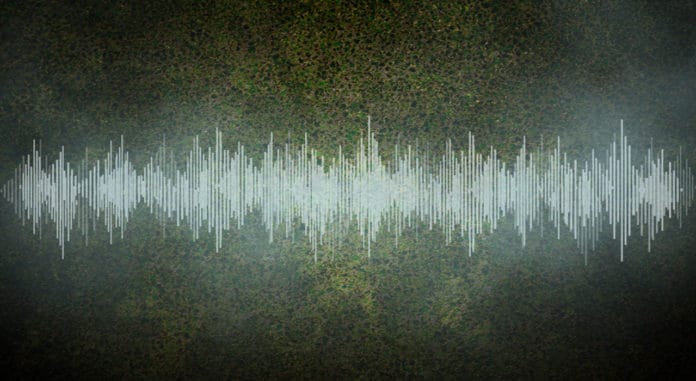After creating perfect fluid in the laboratory, MIT scientists have recorded its sound. This recording results from a glissando of sound waves that the group sent through a carefully controlled gas of elementary particles known as fermions. The pitches that can be heard are the specific frequencies at which the gas resounds like a plucked string.
Scientists created perfect fluid by generating a gas of strongly interacting fermions. Fermions naturally prefer to keep apart from each other. But when they are made to interact strongly, they can behave as a perfect fluid with very low viscosity.
To create such a perfect fluid, the scientists first used lasers to trap a gas of lithium-6 atoms, which are considered fermions.
Scientists configured the laser in such a way that it created an optical box around the fermion gas. Whenever fermions hit the edges of the box, they bounced back into the gas. Also, the interactions between fermions were controlled to be as strong as allowed by quantum mechanics so that inside the box, fermions had to collide with each other at every encounter. This made the fermions turn into a perfect fluid.
Scientists analyzed thousands of sound waves traveling through the gas. They then measured its sound diffusion or how quickly sound dissipates in the gas, directly related to a material’s viscosity or internal friction.
Surprisingly, they found that the fluid’s sound diffusion was so low as to be described by a “quantum” amount of friction, given by a constant nature known as Planck’s constant, and the mass of the individual fermions in the fluid.
This is the first time scientists were able to measure sound diffusion in a perfect fluid.
Scientists can now use the fluid as a model of other, more complicated perfect flows to estimate the plasma’s viscosity in the early universe and the quantum friction within neutron stars — properties that would otherwise be impossible to calculate. Scientists might even be able to predict the sounds they make approximately.
Martin Zwierlein, the Thomas A. Franck Professor of Physics at MIT, said, “It’s quite difficult to listen to a neutron star. But now you could mimic it in a lab using atoms, shake that atomic soup and listen to it, and know-how a neutron star would sound.”
Scientists recorded thousands of snapshots of the fluid as each sound wave rippled through.
Zwierlein said, “All these snapshots together give us a sonogram, and it’s a bit like what’s done when taking an ultrasound at the doctor’s office.”
“In the end, we observed the fluid’s density ripple in response to each type of sound wave. We then looked for the sound frequencies that generated a resonance, or an amplified sound in the fluid, similar to singing at a wine glass and finding the frequency at which it shatters.”
“The quality of the resonances tells me about the fluid’s viscosity or sound diffusivity. If a fluid has low viscosity, it can build up a powerful sound wave and be very loud if hit at just the right frequency. If it’s a very viscous fluid, then it doesn’t have any good resonances.”
Scientists observed clear resonances through the fluid, particularly at low frequencies. From the distribution of these resonances, they calculated the fluid’s sound diffusion. They found this value could also be computed very merely via Planck’s constant and the mass of the average fermion in the gas.
Zwierlein says in addition to using the results to estimate quantum friction in the more exotic matter, such as neutron stars, the results can help understand how certain materials might be made to exhibit perfect, superconducting flow.
Journal Reference:
- Parth B. Patel et al. Universal sound diffusion in a strongly interacting Fermi gas. DOI: 10.1126/science.aaz5756
